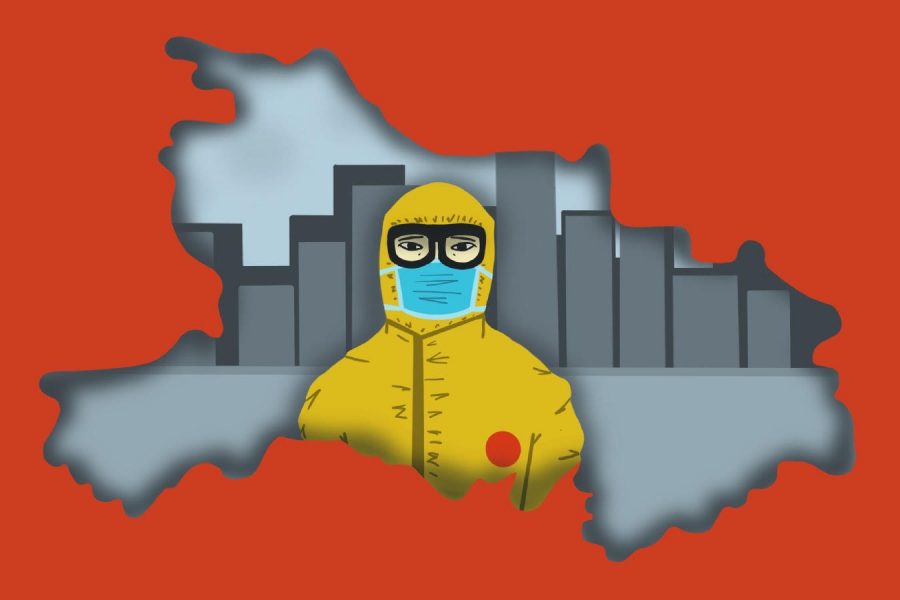“76 Days” and the Harsh Reality of Healthcare Workers During the COVID-19 Pandemic
“76 Days” is set in Wuhan, China during the 76 days it was under lockdown in early 2020 due to COVID-19.
Out of all of the films I’ve seen in the last year, none have felt as raw or current as “76 Days,” the newest documentary film from Hao Wu and Weixi Chen, depicting the lockdown in Wuhan, China, due to the COVID-19 pandemic. Following the harrowing work of healthcare workers in Wuhan after the outbreak, the film puts you into the shoes of nurses and patients alike as they struggle to overcome something far beyond them. With its excellent coverage of heavy subject matter, impressive cinematography, and a handful of incredibly touching and memorable scenes, “76 Days” thoughtfully chronicles the struggles and chaos that have become all too familiar to healthcare workers around the world in the last year.
While the runtime of “76 Days” is only an hour and a half, it doesn’t waste time in making the viewer understand the turmoil that the people of Wuhan are going through. Right off of the bat, the film starts with a heartbreaking scene of a woman losing her father without the chance to say goodbye. While an incredibly jarring way to start a film in general, this cold open serves as the perfect warning for everyone watching that the film is not for the faint of heart. And, after watching the film myself, I can attest to the fact that “76 Days” pulls no punches in showcasing the brutality that COVID-19 inflicted upon the people of Wuhan. As for other memorable scenes without spoiling them, the last ten minutes of “76 Days” were also incredibly simple, but brutal. They did a great job of tying up loose ends in the movie, but I’d be lying if I said they weren’t hard to watch, for all the right reasons. If you’re interested in seeing the movie yourself, I would highly suggest watching the trailer first and asking yourself if you’d be willing to watch an hour and a half of scenes as intense as it is. Trust me, the trailer is only the tip of the iceberg for how heavy this movie can get.
Although the vast majority of “76 Days” deals with heavy subject matter, there were some lighter parts of the film which I really appreciated as well. A scene towards the middle of the movie with healthcare workers writing and drawing encouraging messages on each other’s scrubs was incredibly touching to watch. I really enjoyed seeing a moment of calm amidst the storm, and it didn’t feel out of place tonally with the rest of the film. I also enjoyed how “76 Days” was able to reincorporate so many different patients and nurses throughout the movie. Although this film is a documentary, the people featured really felt like “characters” who we followed throughout. In particular, an older man nicknamed “Grandpa” was fun to see progress over the course of the film, and, without spoiling anything, his arch was one of my favorite aspects of the movie.
In addition to the impressively-told story in “76 Days,” the film is also impressive from a cinematography standpoint. Before watching the film, I was worried that the lockdown in Wuhan at the time the movie was shot would mean the visuals would feel boring or uninspired, but that was clearly not the case. The film features an abundance of impressive shots from all over the city, amidst the pandemic, which are chilling as much as they are visually stunning. The shots inside of the main hospital where the film takes place were also incredibly creative and interesting, and I was impressed with how many unique ways the camera people were able to shoot the same otherwise “dull” hallways. Close-ups of locked door handles being violently shaken back and forth and elderly patients sick in their beds really added to the intensity of the whole situation. For a film shot in primarily one location, I really appreciated how much thought seemed to be put into every shot in the film.
As for any aspects of “76 Days” which I think could have been improved, one of the major things I would have liked to see more of in the movie was context given as to what the viewer was watching. A lot of the film was spent on patients writhing in pain in their beds, and medical staff trying various things to help them, but so little context was given to their situation that the scenes began to feel very repetitive. I understand that “76 Days” was trying to be as unobtrusive to the healthcare workers’ experiences as possible, but I would have liked to learn more about their situation specifically as opposed to watching it without much context. In addition, the film felt like it began to lose focus a bit from the middle of the movie up until the last third. I’m not sure if the film itself slowed down, or I just became less invested in the story as a viewer, but it wasn’t until the film started to follow more patients as they assimilated to life outside of the hospital that I became invested again. I feel like if the film were to have integrated more scenes of patients leaving the hospital earlier on, or at least something different to help break up some of the scenes in the middle, it would have streamlined the experience of the film overall.
Despite its faults, if there’s one thing in particular that I got out of watching “76 Days,” it’s a greater appreciation for the work that healthcare workers around the world have done this past year. Even though I couldn’t understand what the healthcare workers in the film were saying due to language barriers, the stress, pain and anxiety in their voices spoke volumes about the chaos that COVID-19 has unleashed on so many. While I’ll never know the hardships of every healthcare worker’s situation, this film helped me better understand the anxiety and stress associated with their jobs. And, after only watching them for an hour and a half, I could not imagine having the strength to do the work that countless healthcare workers around the world are doing right now. If I can commend “76 Days” for anything, it’s giving me the opportunity to see the world through someone else’s eyes, as difficult as their life may be.
Albeit a heavy film to watch during a year of so much stress and uncertainty, “76 Days” is an impressive feat, especially considering the chaos of the world during the time it was made. While “anxiety-inducing” doesn’t even begin to cover the extent of emotions felt while watching it, this film is a must-watch for anyone wanting to see up-close the experiences of healthcare workers who have fought– and are still fighting– in order to keep everyone else safe.
”76 Days” is available for streaming through FilmStreams @ home, found here.
Your donation will support the student journalists of Omaha Westside High School. Your contribution will allow us to purchase equipment and cover our annual website hosting costs.

Hi, my name is Will Eikenbary! I am a Journalism Hallway Coordinator working on Westside Wired this year. I am currently a senior and this is my fourth...







